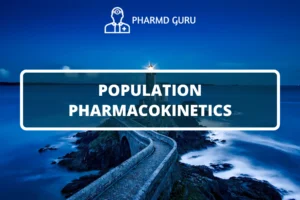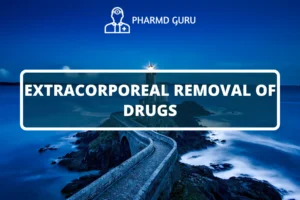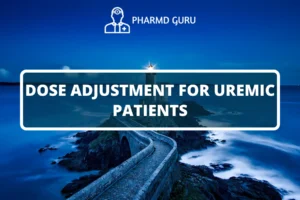Effect of hepatic disease on pharmacokinetics is a topic in Clinical Pharmacokinetics & Pharmacotherapeutic drug monitoring, which covers Introduction to Hepatic diseases & Dosage considerations in Hepatic diseases.
SCROLL DOWN TO THE BOTTOM OF THE PAGE FOR ACTUAL NOTES.
Hepatic disease, also known as liver disease, can have a significant impact on the pharmacokinetics of drugs. The liver plays a crucial role in drug metabolism, and any impairment in its function can result in altered drug clearance, distribution, and bioavailability. In this article, we will explore the effect of hepatic disease on pharmacokinetics and the implications for drug therapy.
TABLE OF CONTENTS:
- Introduction
- Liver Function and Drug Metabolism
- Impact of Hepatic Disease on Drug Clearance
- Changes in Drug Distribution
- Altered Drug Bioavailability
- Considerations for Drug Therapy in Hepatic Disease
1. Introduction
The liver plays a crucial role in drug metabolism, which involves the biotransformation of drugs into metabolites that can be eliminated from the body. Hepatic disease can lead to impaired liver function, resulting in significant changes in the pharmacokinetics of drugs.
2. Liver Function and Drug Metabolism
The liver is responsible for several metabolic processes, including drug metabolism. It contains enzymes that facilitate the biotransformation of drugs into more water-soluble compounds, allowing for their elimination from the body. The two primary phases of drug metabolism are Phase I (functionalization) and Phase II (conjugation). In Phase I, drugs are metabolized by enzymes such as cytochrome P450 (CYP) enzymes, while Phase II involves the conjugation of drugs with endogenous substances to enhance their elimination.
3. Impact of Hepatic Disease on Drug Clearance
Hepatic disease can lead to impaired drug clearance due to several factors:
- Reduced enzyme activity: Hepatic disease can decrease the activity of drug-metabolizing enzymes, particularly the cytochrome P450 enzymes. This can result in slower drug metabolism and prolonged drug exposure.
- Decreased hepatic blood flow: Liver dysfunction can reduce hepatic blood flow, impairing the delivery of drugs to the liver for metabolism. This can further contribute to reduced drug clearance.
- Altered protein binding: Hepatic disease can affect the levels and function of plasma proteins involved in drug binding. Changes in protein binding can impact drug distribution and elimination.
4. Changes in Drug Distribution
Liver disease can also affect drug distribution within the body. Altered protein binding, as mentioned earlier, can influence the free fraction of drugs in the bloodstream. Drugs that are highly protein-bound may exhibit increased levels of unbound (active) drug in the presence of liver disease. Additionally, changes in the synthesis of plasma proteins, such as albumin, can further impact drug distribution.
5. Altered Drug Bioavailability
Hepatic disease can affect the bioavailability of drugs, which refers to the fraction of an administered drug that reaches the systemic circulation. Impaired liver function can lead to decreased drug metabolism and increased drug concentrations, resulting in higher systemic exposure and potentially enhanced drug effects. Conversely, liver disease can also lead to decreased bioavailability for drugs that undergo extensive first-pass metabolism in the liver.
6. Considerations for Drug Therapy in Hepatic Disease
When prescribing medications for patients with hepatic disease, healthcare providers must consider the following:
- Dose adjustment: Depending on the severity of liver disease, dose adjustments may be necessary to account for impaired drug clearance. Lower doses may be required to prevent drug accumulation and potential toxicity.
- Monitoring: Regular monitoring of drug levels and liver function tests can help assess the effectiveness and safety of drug therapy in patients with hepatic disease.
- Drug selection: Some drugs may be contraindicated in hepatic disease due to their extensive metabolism or hepatotoxic potential. Alternative medications with minimal hepatic metabolism may be preferred.
ACTUAL NOTES:
PATH: PHARMD/ PHARMD NOTES/ PHARMD FIFTH YEAR NOTES/ CLINICAL PHARMACOKINETICS AND PHARMACOTHERAPEUTIC DRUG MONITORING (TDM)/ EFFECT OF HEPATIC DISEASE ON PHARMACOKINETICS.




